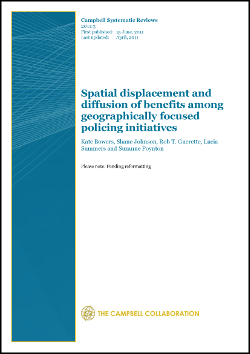
One of the most common criticisms of spatially focused policing efforts (such as Problem-Oriented Policing, police 'crackdowns‘ or hotspots policing) is that crime will simply relocate to other times and places since the "root causes" of crime were not addressed. This phenomenon—called crime displacement—has important implications for many policing projects.By far, spatial displacement (movement of crime from a treatment area to an area nearby) is the form most commonly recognized. At the extreme, widespread displacement stands to undermine the effects of geographically focused policing actions. More often, however, research suggests that crime displacement is rarely total. On the other end of the displacement continuum is the phenomenon of 'diffusion of crime control benefits‘ (a term coined by Ron Clarke and David Weisburd in 1994). Diffusion occurs when reductions of crime (or other improvements) are achieved in areas that are close to crime prevention interventions, even though those areas were not actually targeted by the intervention itself.
